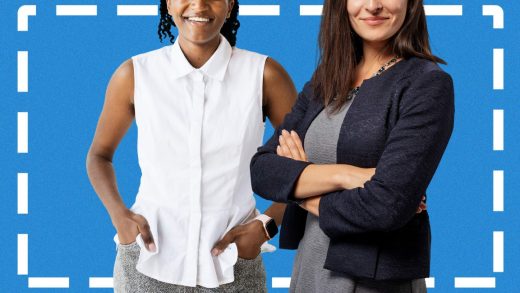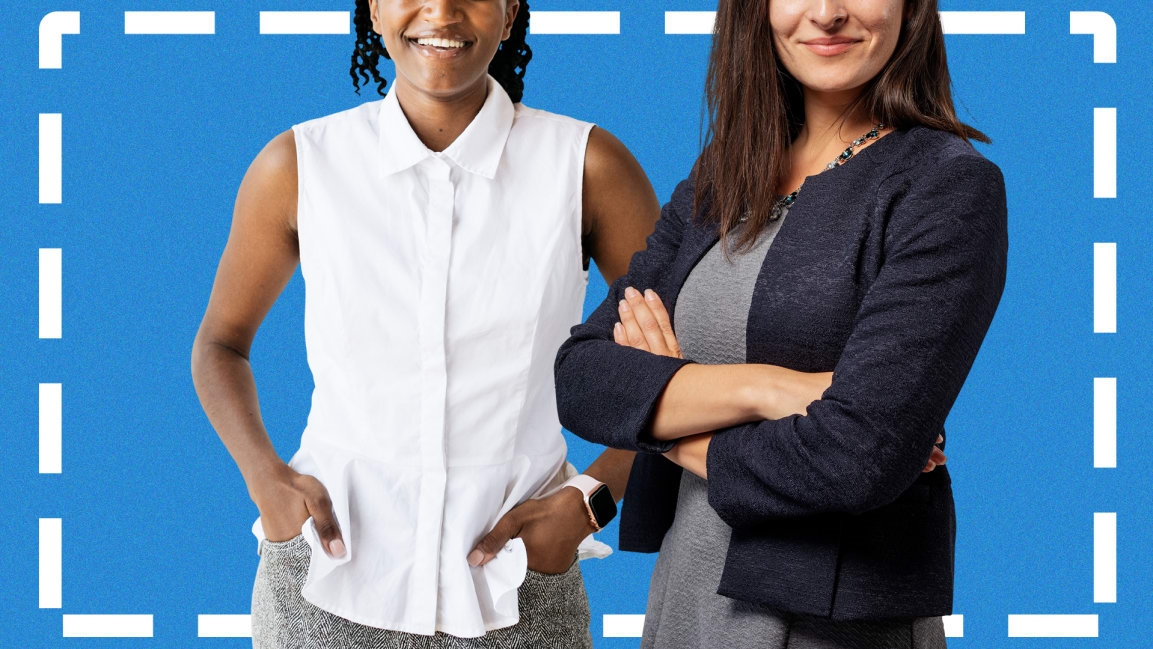Unemployed? Sign up for a free headshot and look better on LinkedIn
A picture is worth 1,000 words—and a new job.
To help with the latter, a photography agency called Headshot Booker is providing free headshots to 10,000 unemployed people across all 50 states on Wednesday, July 22. More than 200 photographers are donating their time in 10-minute chunks—five to seven minutes for taking pictures and the remaining time to ensure social distancing is maintained between appointments.
The majority of photos will be shot 10 a.m.-7 p.m. in 500-square-foot-or-larger pop-up studios at Brookfield Properties shopping centers, organizers say, while the remaining sites were secured by local photogs, such as a public building in Wyoming and a private studio in Arkansas. Spots are booked online, and the registration form includes the option to share one’s personal story. Enrollees will have the headshots sent to their cellphones, in most cases on the same day.
“I was in quarantine, and I was thinking, ‘What can I do to help my business?’ I was driving myself crazy, and I did a 180 on that thinking. “What can we do to help people?,’” says Headshot Booker cofounder Tony Taafe. “I know what a difference this will make to people. Not only will it help their LinkedIn profile and things like—that’s obvious. I know how it’ll help themselves, how confident they feel, to have a photo they like, because most people don’t.”
Snap judgments
The Headshot Booker initiative is relying on the honor system to ensure only unemployed people sign up; participants don’t have to name their former employers or prove with any document that they’re now out of work.
The price for a high-quality, professional headshot starts around $250, according to organizers.
And people pay that. They know that how they present themselves visually online is a critical part of job-hunting today. Whether looking for people to reach out to or vetting those who’ve already applied for open positions, hiring managers pore over candidates’ social media accounts to learn more about them and the public selves they put forward.
For example, according to LinkedIn, profiles with photos get 21 times more views and nine more connection requests.
“Your profile is about your professional representation, and adding a photo is the simplest way to personalize your profile and is one of the many aspects of your professional identity,” says LinkedIn spokeswoman Suzi Owens. “Your work history, skills, and profile picture are all steps that help make you more discoverable, and get a conversation going.”
Don’t use a poor-quality, blurry, or dim headshot, and certainly don’t skip one altogether, advises Latesha Byrd, a career coach in Charlotte, North Carolina. Make sure you have consistent photos across all platforms; you don’t want a picture from five years ago on Instagram, one that’s two decades old on LinkedIn, and a photo from last week on Twitter.
“We live in a digital world and we connect with people visually,” Byrd says. “Your picture will be the first thing people see when they visit any of your profiles. If you don’t have a picture, it makes it harder for people to engage with you or to connect with you online, because they don’t know who they’re connecting to.”
“A little bit of your personality”
That’s key at a time when the average job posting gets over 250 applicants and maybe 20% of them are granted interviews, according to Byrd. HR executives are more likely to remember people whose headshots they’ve seen. With virtual job interviews the norm during the pandemic, this is even more crucial.
“It’s about building an authentic and genuine relationship. People want to know who they’re engaging with. People will feel comfortable with you,” she says. “That’s another way to really tell your story, demonstrate your brand, and make people feel connected to you before they even have a chance to meet you.”
Alicia Trimble was dumped into that world last Tuesday, when she got laid off after three-and-a-half years as a sales manager and nutrition coach at a diet-food company, due to a decrease in business in the wake of COVID-19. The following night, she was having trouble sleeping, so she decided to scroll through her Facebook feed. The Little Elm, Texas, resident spotted a post about free headshots and signed up for a spot in neighboring Frisco, so she can replace the six-year-old photo she currently uses on social media.
In addition to networking with friends, family, and former business contacts and responding to two or three job postings a day, Trimble’s getting ready for her new headshot. The current plan calls for a white pressed shirt and a black blazer with very neutral, matte makeup and maybe a little color on her lips and stud earrings.
“It’s important to show recruiters and potential hirers that face behind the name,” Trimble explains. “A picture can show a little bit of your personality, the friendly side.”
Among the photographers donating their time is Karaminder Ghuman, who’ll be shooting headshots in San Francisco’s Stonestown Galleria. He dismisses criticisms that hiring managers should look only at work histories, job titles, projects successfully completed, alma maters, and grade point averages—”We don’t live in a telegram world anymore”—and says many of his colleagues don’t have a lot of work during the pandemic. This is a great way to give back, using their talent.
“We’re helping people want to help themselves,” Ghuman explains. “They want to work. Let’s help get them there. Let’s put them in the best position. We’re not cheating or lying. We’re showing the best, polished version of you. Ninety-nine percent of people have never met you. All they have to go on is your headshot.”
(14)



